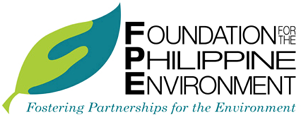
FPE-Funded Researches
[2012] Restoring the Pagsangaan Watershed for Forest Biodiversity Conservation
The Pagsangaan watershed in Ormoc, Leyte covers about 40,000 hectares and is one of the most important watersheds in Leyte island. Serving the function of a primary resource for natural and man-made community systems, the watershed provides the irrigation needs of the north-western part of the island.
Project Proponent/Partner: Save Ormoc Bay Aggrupation, Inc. (SOBA)
The Pagsangaan watershed in Ormoc, Leyte covers about 40,000 hectares and is one of the most important watersheds in Leyte island. Serving the function of a primary resource for natural and man-made community systems, the watershed provides the irrigation needs of the north-western part of the island that covers Ormoc City, Kananga, Matag-ob, Palompon, Capoocan, and Leyte province, among others.
It should however be noted that it is already in a state of degradation, having lost significant natural forests and biodiversity to the requirements of power generation, industrialization, and the greater need for food by the exploding population. Unless otherwise provided with appropriate attention and intervention, the watershed will soon be unable to support the water supply requirements of the increasing populations of the surrounding locations.
Watershed rehabilitation in practice remains a challenge especially since key stakeholders seem to be little informed on the state of the watershed and its impact on human survival. This research project was therefore implemented to generate genuine people’s participation and popularize local mechanisms for sustainable forest and biodiversity management and conservation, which could lead towards the official recognition and proclamation of the Pagsangaan watershed as one of the country’s critical watersheds.
The project strategies are a mix of participatory research, advocacy, capacity-building, networking, provision of livelihood opportunities, and monitoring and evaluation. The baseline research identified the socio-economic and biophysical profiles of the watershed and its forest biodiversity. Participatory approaches were employed and involved a local Watershed Research and Development Team (WaRDT) in every covered LGU. The WaRDT could become a formal LGU-based team that would sustain project initiatives. In addition, a Watershed Advocacy, Livelihood and Training Team (WALT) per LGU was formed under the project, given the intent to support the development of forest and biodiversity conservation plans. Feasible forest-based livelihood options such as rainforestationwere also adopted and piloted under the initiative, while local mechanisms such as forest co-management arrangements between the LGU and the DENR were facilitated, along with support from major partners to sustain forest restoration and biodiversity conservation efforts in the watershed.
Reference: http://leytesamardaily.net/2012/07/declaration-of-pagsangaan-as-watershed-reserve-pushed/

 DISPLAY CALENDAR
DISPLAY CALENDAR
 Read Policy Briefs
Read Policy Briefs
 View Our Partners
View Our Partners
 Access Grants MIS
Access Grants MIS
 Login to Webmail
Login to Webmail